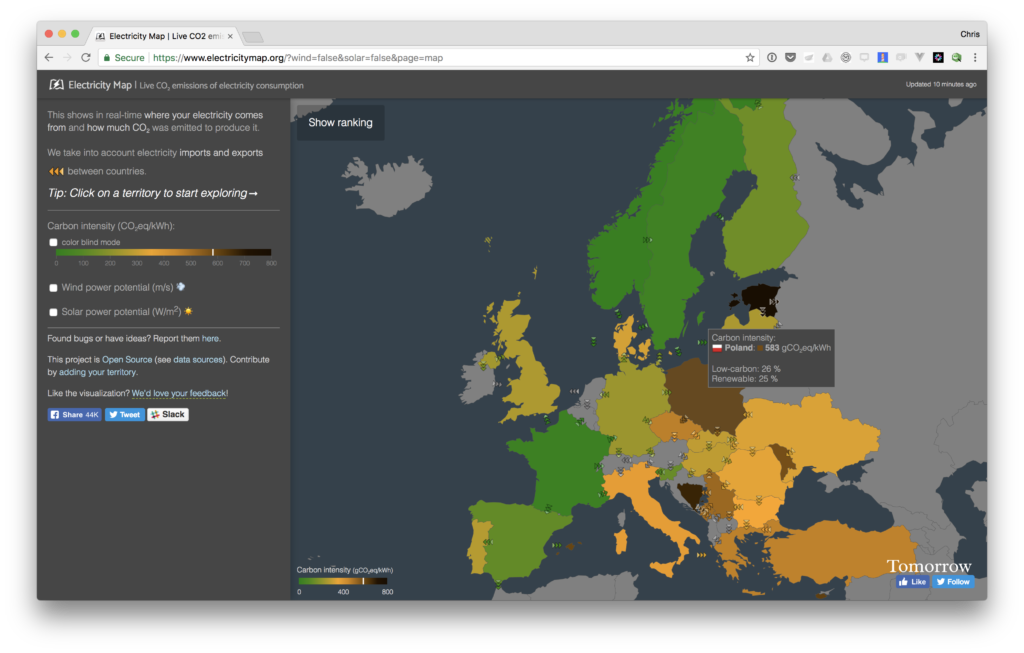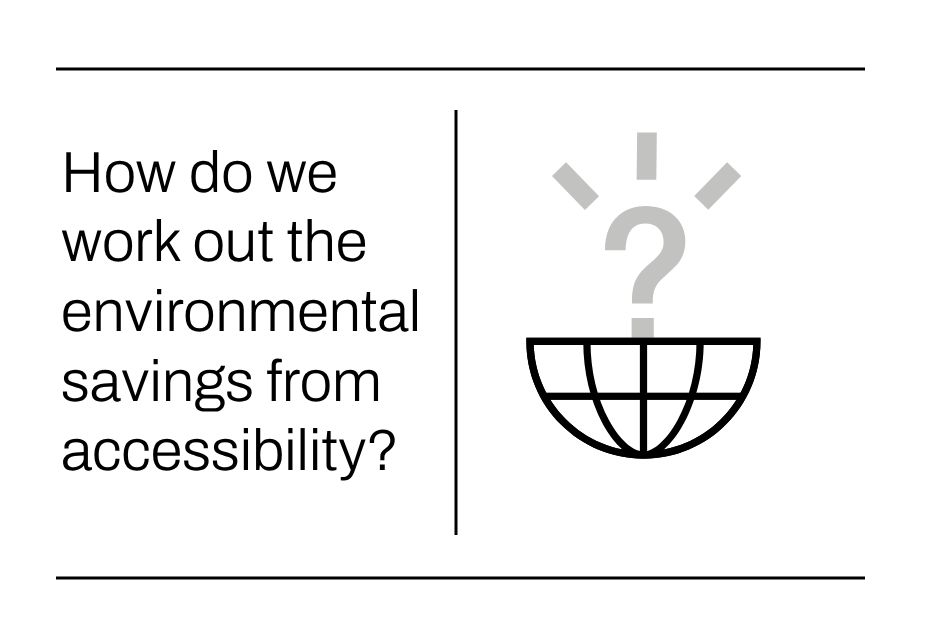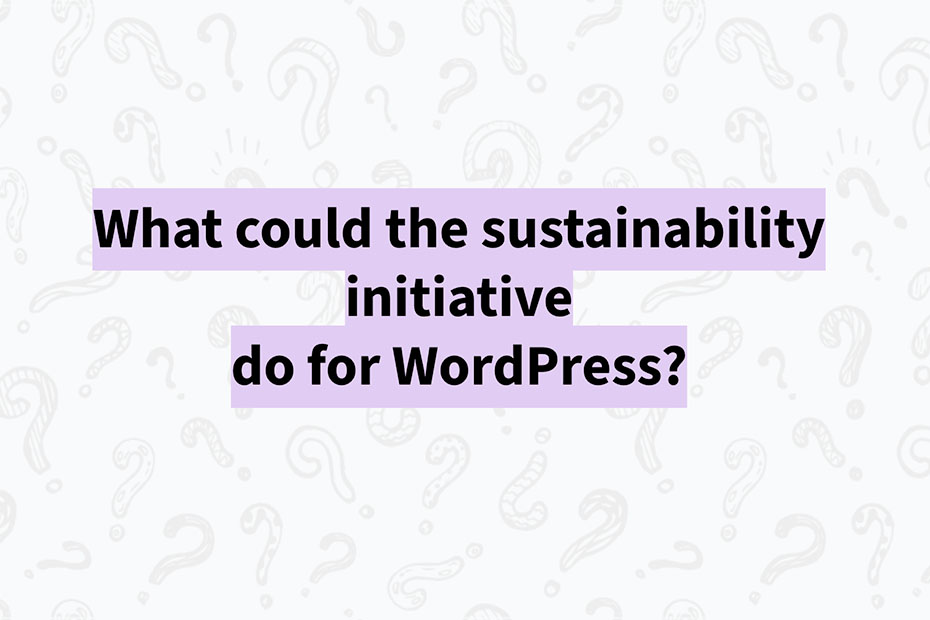Sometimes at the Green Web Foundation, people ask us what’s important to consider when looking for a green hosting. provider. In this post we outline a few criteria to help you choose, and why.
The short version – unsurprisingly, it’s not that different from regular hosting.
Support and responsiveness
You tend to notice hosting the most when things are not working, and either customers, management, coworkers (and sometimes all three) are loudly asking when things will be back to their previous, not-on-fire state.
In cases like this you’ll appreciate clear communications from a support team, and having access to people with deep expertise – if you’re hosting something for someone, and their business relies on this hosting, it’s worth remembering that the real thing your customers are usually buying, is the ability to avoid disruptive changes to how they work.
It’s worth taking into account the cost of this disruption to work, and downtime in general, as it’ll help inform the second criteria, pricing.
Pricing
Once you know what you’re after, and you feel like the hosting company you’re looking at is competent, it’s at this point where it’s worth thinking about the cost of hosting with the organisation, and matching the expected usage of a site to the capacity you want to pay for.
If you’re using any kind of analytics products like Matomo or Google Analytics, and you have an idea of how happy you or your users are with the site, you’ll have an idea of the correct ‘size’ of server you need. The more certain you are about what you need, and how demand will change the more likely it is that you can go for a longer period of hosting, where the costs per month are lower.
If you don’t know this yet, it’s probably not worth committing for a long contract, without being able to make changes – this is doubly so if you’re choosing to use a proprietary platform without a clear migration path away from a provider. This brings us nicely to…
Standards and Lock-in
When you’re running a site with a given hosting provider, it’s important to have an idea of what leaving them would entail, if your needs change, or it turns out that they’re not a good fit.
There are things you can do to mitigate against risks here. Open standards and open source software make it easier to run the same kind of site with a different provider, compared to an entirely proprietary stack of technologies – although the trade off you increasingly tend to make now is about the end to end experience of needing something changed, having a developer or site builder work on it, show it in a staging area, then rolling out the changes to your site or product for your users.
With a growing number of tools, you might have a more specialised, proprietary platform built from a set of open, standardised components that would take a long time or a large investment in tooling to set up yourself – in this case, where will be a build vs buy decision you need to make.
Where it’s different for green hosts – transparency around how sourcing power
Finally, once you have answers above, it’s worth thinking about how the servers you’re going to rely on are powered. If there isn’t an explicit statement from a given company about how they use renewable or sustainable power, it’s safest to assume the company is using a power from a mix of sources, and you can get an idea of how “green” this power is with electricity map. This shows roughly how ‘dirty’ power in realtime, based on open data about how what kinds of power stations are generating electricity in a given country.
Using just this, you might make a decision to choose a host based in one country over another – the map below shows how electricity in Scandinavia, powered by lots of hydro and wind, is cleaner than Poland, which tends to get most of its power from coal.

If a company is making statements about green power, then they should be able to share details about how their power is considered “green”. In some cases they might source power directly, operating their own infrastructure, but in many cases, they’ll be buying special ‘renewable energy credits’ – tradable certificates allocated to companies that generate power from renewable sources.
This might be referred to as RECS, REGOS, GvOs or variants and while there are smaller differences from country to country, the principle is largely the same – the “greenness” is a tradeable, so a company running on “brown” fossil power can purchase these certificates and then say they run on green power.
Under this scheme, the idea is that money paid for these credits acts as an incentive for further investment in renewable power, speeding a shift away from fossil fuels.
The issue here is that like carbon offsets, the idea of paying money to reward green behaviour in a distant place does not sit well with everyone.
Generally speaking, if you want to pay for renewable energy credits on the same grid where you are running your servers, you can, but it’s more expensive – just like how buying offsets in the same country where emissions from running servers take place will cost more.
If you’re choosing a hosting company that relies on renewable energy credits, ask how what kind of credits they use, and whether they buy them from the same grid where the infrastructure you use is. They should be able to give you a straight answer here.
The same applies if provider is not relying on energy credits, but offsetting instead – ask how they know the offsets are effective, and if there is some kind of certification scheme in play, like the Gold Standard, or the Verified Carbon Standard Program. It’s typically a warning sign that they are cutting corners if they can not give a convincing answer about emissions either being avoided, or carbon being sequestered from the air – it’s often a case that they are buying ‘lower quality’ offsets.
How does my part of the world compare for hosting options?
We maintain a directory of green hosts based on information in the Green Web Foundation Database, which we’ve been building over the last 10 years.
If, for example you were looking for good green hosting companies in the UK, you’d jump to the listing – once you have that, try applying the criteria above to end up with a host you can trust to keep your site up, without it costing the earth.



